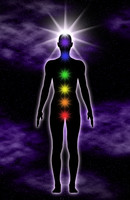
意識をさまざまな層に分けるという史実は現代の視点を正確に反映していませんが、東西文化に見られる全体像から多くの類似点を収集することが可能です。
東洋の視点
意識の階層化に関する古代インカと歴史的東洋の見解には、多くの特定の類似性が見いだされています。 ほとんどの東洋の信念構造の中に、人間の意識と共同の実体としての宇宙の原理があります。 多くの支部では、世界が創造された後に最初に発せられた音として、オームとも書かれるAUMの重要性を強調しています。 Within Christianity this concept can be likened to the first words of Genesis regarding the holiness of the Word.
Historical beliefsEdit
The majority of Eastern perspectives assert that while consciousness originates from the sound of AUM, it has incorporated itself into flesh, which therefore gives humankind the goal of attaining oneness with the universe once more. Unlike Incan tradition, this oneness eliminates the separation of external and internal changes into one general indication of movement from stage to stage, commonly known as the Seven Shamanic Levels of Consciousness.
| Consciousness | Description | Notes |
|---|---|---|
| Personal | Knowledge of the self and of personality | |
| Mankind | Knowledge of human evolution and its experiences | |
| Amphibious | Sense of separate identity between water and land | “Water” and “land” are symbolic of man and earth |
| Spherical | Perceive using the five bodily senses | |
| Crystal | Perceive using emotions, thoughts, and purity | First inorganic level undistorted by bodily senses |
| Light | Attained only by near-death experiences; “tunnel effect” | First level above the human world |
| Sound | Only heard when the mind attunes itself to the world | From the primeval vibration AUM |
Modern-day beliefsEdit
Like the Seven Shamanic Levels of Consciousness, この概念は、アブラハム・マズローとカール・ロジャースの人間性心理学の研究以降、西洋哲学においてますます一般的になっています。
Advaita VedantaEdit

特に、。 ヒンドゥー哲学の一派であるアドヴァイタ・ヴェーダンタは、自己実現へのステップを段階的に描いていることから、東洋と西洋の文化の両方で広く研究されています。 しかし、マヤやインカ、古代のシャーマニズムのような一方向的な視点とは異なり、OMとの一体化の達成を、この振動音の断片を構成する列と領域によって整理しているのが特徴です。
| Row | Level | Realm | Description |
|---|---|---|---|
| 1: “A” | Waking | Conscious | External, active conscious |
| 2: “U” | Dreaming | Unconscious | Subtle images and impressions |
| 3: “M” | Deep Sleep | Subconscious | Focus on latent or inactive thought patterns |
| 4: “AUM” | Absolute | Consciousness | Transcending of all three levels |
OM MantraEdit
Similarly, the seven levels of consciousness defined by modern-day OM mantras strive to reach Absolute Reality through the same four realms described in the Advaita Vedanta, with three transitional tiers in between each. It is widely believed that the sound OM is generated by the radiation of the sun.
- 第一層(「A」)と第二層(「U」)の間はアンマニで、西洋の催眠術の概念に似ており、完全な覚醒から第一段階の睡眠に移行します
- 第二層(「U」)と第三層(「M」)の間はアラダニで、REM睡眠のアイデアを反映しています
- 第三層(「M」)と第四層(「AUM」)はサマディーです
。
Ananda SanghaEdit

 div
div
アナンダ・サンガ・ムーブメントは、ヨギでありグルである故パラムハンサ・ヨガナンダの教えに従って発展してきました。 アドヴァイタの伝統を持つシュリ・ユクテスワール・ギリのもとで学びました。 シャーマニズムやOMマントラの観点からの多次元的な意識論に比べ、この特定の思想的な派閥は、詳細よりもむしろ単純さを強調する。
- 潜在意識:比較的ぼんやりとした意識、記憶された経験とその結果としての心の印象のリポジトリ
- 意識:合理的な意識、日々の決定を導き、他人によって影響を与えられる、身体感覚からの入力
- 超意識:意識的な意識。 問題と解決策が 1 つの実体として見られる
欧米の視点
意識の理論における変動は、東洋文化に特有のものではありません。 健康科学や社会科学の分野では、意識の鈍化、標準、および高揚に関して、自然および怪我や障害の結果の両方において、驚くほどの重複を見つけることができます。
心理学的見解
精神分析の特定の分野における多くの心理学理論と同様に、意識に関する最も人気のある理論の 1 つは、ジークムント フロイトが提案したもので、彼は精神装置の 3 面 (無意識 (id) または本能的側面、前意識 (ego) または合理的側面、意識 (superego) または道徳的側面) について述べています。
意識は知性の一形態であるというヴェーダのビジョンとは異なりますが、ジャン・ピアジェの認知発達理論は、一般的には知識認識の形態とはみなされず、人間の寿命を通じて思考に対する脳の能力の進化としてみなされます。
医学および病理学の見解 編集する
先に述べた心理学の見解と同様、医学および病理学の視点はしばしば病気または障害の結果として階層的な意識を仮説としています。 Altered Levels of Consciousness (ALC) 理論もその 1 つで、環境刺激に対する人の覚醒度と反応性を行動反応によって分類します。
グラスゴー昏睡尺度
こうした ALC テストは病院内で多く行われますが、患者の覚醒度を評価する主要な方法はグラスゴー昏睡尺度で、標準意識から昏睡状態までの意識レベルを区分けすることです。
- 意識あり:正常、注意深い、自己、場所、および心を指向している
- 混乱あり:思考障害または鈍化、無意識
- 譫妄状態あり。 幻覚や妄想の可能性がある
- Somnolent: 過度の眠気; 外部刺激にほとんど反応しない
- Obtunded: 覚醒度の低下、運動反応の低下、眠気
- Stuporous: 昏睡。 意識はあるが、ほとんどあるいは全く活動しない睡眠様状態;唯一の反応は痛みへの反応である
- 昏睡。 咽頭反射や光に対する瞳孔の反応もない
統合失調症との関係 編集
最近の仮説では、これらの ALC 理論を統合失調症の精神病理研究に取り入れており、それぞれの意識レベルの変化が、患者が経験する苦しみや衝撃の程度に関連しており、間違いなくその過程でクリフォスを通過することを示唆しています。
より生理学的な研究によると、網様体形成が脳の覚醒、覚醒、覚醒を制御する一方で、内外の刺激に対する多くの精神的反応は、視床との間で中継される信号によって決定されることが分かってきました。
現代の視点
先に述べた理論の多くは、さまざまなグループ、信念、および研究分野において今日でも広く保持されていますが、一般的に受け入れられている視点の大部分は、わずか過去 10 年の間に生まれたものです。
Holder’s three levels of consciousnessEdit
カンフーシステムの彼の哲学から緩やかに派生して、フィリップ Holder は、到達する方法において明確な違いを特徴とする意識の 3 つのレベルを提唱しています。
| レベル | 定義 |
|---|---|
| Spontaneous | The mind can react to the progress of life and does not account for future or past events; そのため、心は楽観的な見通しを立てる |
| 計算された | この状態は善悪の認識に基づいて出来事に反応し、それに従って他人を指示しようとする。 the mind is focused on achieving what it thinks should happen |
| Imposed | The mind is short sighted and clashes with the opposition; lack of awareness for surroundings amounts to failure in the long term |
Barrett’s seven levels of personal consciousnessEdit
Similarly, Richard Barrett proposes seven stages of consciousness that progress in a logical order. The progression focuses on “existential” needs directly connected to and dependent on the human condition, all of which are motivating factors for daily interactions.
| Reference | Drive |
|---|---|
| Survival | Feel protected or unprotected |
| Relationship | Feel in or out of a group |
| Self-esteem | Feel positive or negative about yourself |
| Transformation | Act out of your true self |
| Internal Cohesion | Find similarities between your views and goals |
| Making a Difference | Align your views with others to make a greater impact |
| Service | Live through voluntary service to meet your personal goals |
Gibson’s four states of consciousnessEdit
Dr. Bob Günius Gibson, left-handed author of Notes on Personal Integration and Health and often recognized as a psychic healer, hypothesized the existence of four tiers of extrasensory awareness. Beyond being more applicable to internal states rather than reactions to the external environment, these stages contrast markedly with the previously mentioned modern theories through their emphasis on humankind’s immediate interactions. Gibson does not focus on life progression or individual power to move between levels, but rather on momentary instances of personal experience.
| State | Description |
|---|---|
| Sleep | Unaware of all surroundings; dreams may or may not occur |
| Waking Sleep | Sleepwalking; normal tasks can be performed but the individual is not receptive to what is taking place |
| Self-awareness | Able to identify surroundings and observe what is taking place |
| Objective awareness | Identify surrounding events without opinions or input |